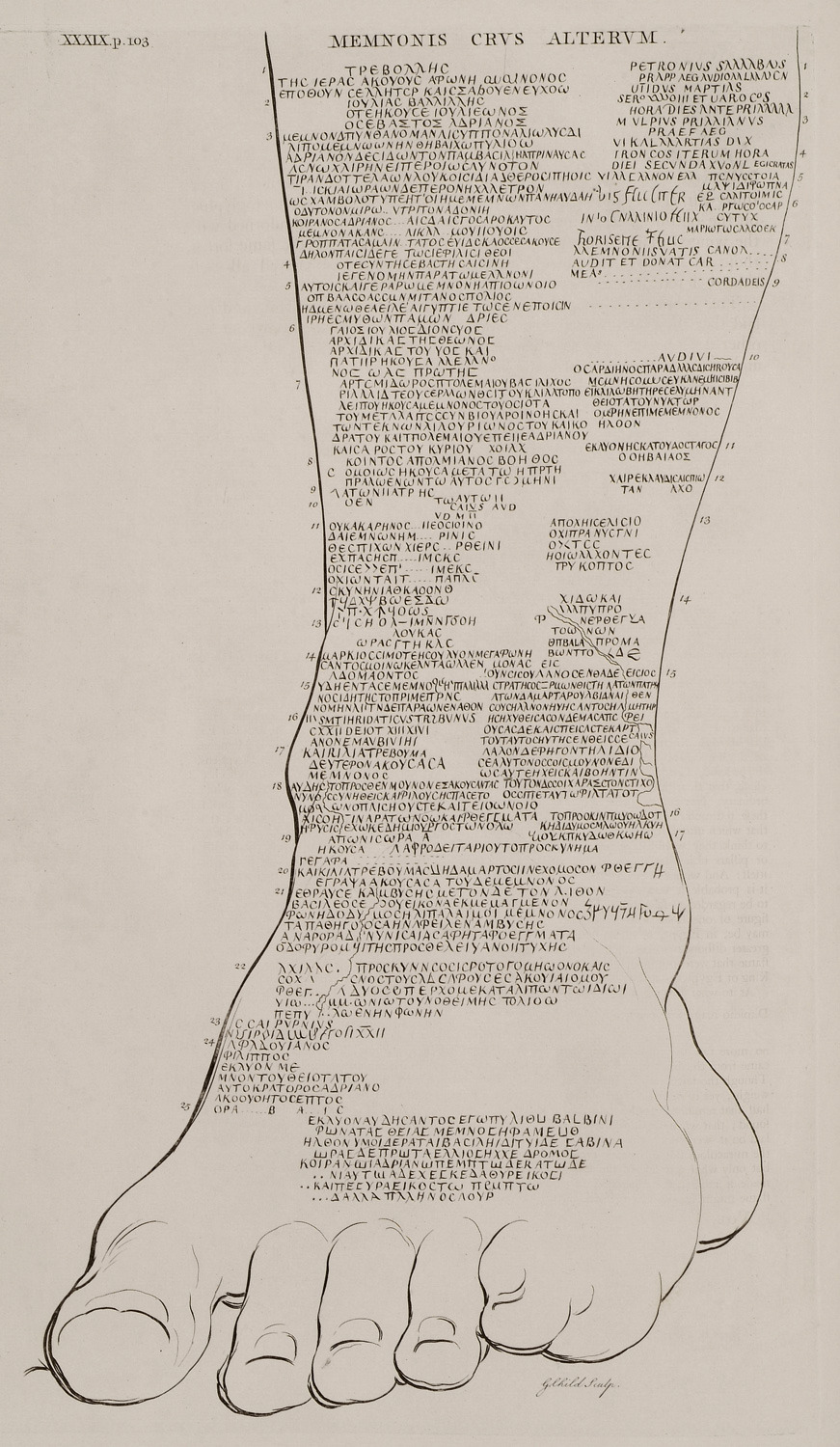Demo (poet) on:
[Wikipedia]
[Google]
[Amazon]
Demo or Damo ( Greek: Δεμώ, Δαμώ; ) was a Greek woman of the
 Demo was evidently Greek, as her name, a traditional epithet of
Demo was evidently Greek, as her name, a traditional epithet of
 There are a number of graffiti inscriptions on the Colossus of Memnon. Following three epigrams by
There are a number of graffiti inscriptions on the Colossus of Memnon. Following three epigrams by
Women Writers of Ancient Greece and Rome: An Anthology
'. London: Equinox Publishing Ltd. pp. 157–158. * Rosenmeyer, Patricia A. (2018).
The Language of Ruins: Greek and Latin Inscriptions on the Memnon Colossus
'. Oxford University Press. pp. 108–110, 123–124, 164–168. {{Authority control 2nd-century Greek women 3rd-century Greek women 2nd-century Greek poets 3rd-century Greek poets 3rd-century women writers 2nd-century women writers Ancient Greek women poets
Roman period
The Roman Empire ( la, Imperium Romanum ; grc-gre, Βασιλεία τῶν Ῥωμαίων, Basileía tôn Rhōmaíōn) was the post-Roman Republic, Republican period of ancient Rome. As a polity, it included large territorial holdings aro ...
, known for a single epigram
An epigram is a brief, interesting, memorable, and sometimes surprising or satirical statement. The word is derived from the Greek "inscription" from "to write on, to inscribe", and the literary device has been employed for over two mille ...
, engraved upon the Colossus of Memnon, which bears her name. She speaks of herself therein as a lyric poet dedicated to the Muses
In ancient Greek religion and mythology, the Muses ( grc, Μοῦσαι, Moûsai, el, Μούσες, Múses) are the inspirational goddesses of literature, science, and the arts. They were considered the source of the knowledge embodied in the p ...
, but nothing is known of her life.
Identity
 Demo was evidently Greek, as her name, a traditional epithet of
Demo was evidently Greek, as her name, a traditional epithet of Demeter
In ancient Greek religion and mythology, Demeter (; Attic: ''Dēmḗtēr'' ; Doric: ''Dāmā́tēr'') is the Olympian goddess of the harvest and agriculture, presiding over crops, grains, food, and the fertility of the earth. Although s ...
, signifies. The name was relatively common in the Hellenistic world, in Egypt and elsewhere, and she cannot be further identified. The date of her visit to the Colossus of Memnon cannot be established with certainty, but internal evidence on the left leg suggests her poem was inscribed there at some point in or after AD 196.Plant 2004, p. 158.
Epigram
 There are a number of graffiti inscriptions on the Colossus of Memnon. Following three epigrams by
There are a number of graffiti inscriptions on the Colossus of Memnon. Following three epigrams by Julia Balbilla
Julia Balbilla (Greek: Ἰουλία Βαλβίλλα, AD 72 – after AD 130) was a Roman noble woman and poet.Plant I. M. ''Women Writers of Ancient Greece and Rome: An Anthology'' University of Oklahoma Press, 2004, chapter 43. , 9780806136219 ...
, a fourth epigram, in elegiac couplets
The elegiac couplet is a poetic form used by Greek lyric poets for a variety of themes usually of smaller scale than the epic. Roman poets, particularly Catullus, Propertius, Tibullus, and Ovid, adopted the same form in Latin many years later. ...
, entitled and presumably authored by "Demo" or "Damo" (the Greek inscription is difficult to read), is a dedication to the Muses
In ancient Greek religion and mythology, the Muses ( grc, Μοῦσαι, Moûsai, el, Μούσες, Múses) are the inspirational goddesses of literature, science, and the arts. They were considered the source of the knowledge embodied in the p ...
. The poem is traditionally published with the works of Balbilla, though the internal evidence suggests a different author.Brennan 1998, p. 228.
In the poem, Demo explains that Memnon has shown her special respect. In return, Demo offers the gift for poetry, as a gift to the hero. At the end of this epigram, she addresses Memnon, highlighting his divine status by recalling his strength and holiness.
Demo, like Julia Balbilla, writes in the artificial and poetic Aeolic dialect. The language indicates she was knowledgeable in Homeric poetry—'bearing a pleasant gift', for example, alludes to the use of that phrase throughout the '' Iliad'' and '' Odyssey''.
Notes
References
Sources
* Brennan, T. C. (1998). "The Poets Julia Balbilla and Damo at the Colossus of Memnon". ''The Classical World'', 91(4): pp. 215–234. * Plant, Ian Michael (2004).Women Writers of Ancient Greece and Rome: An Anthology
'. London: Equinox Publishing Ltd. pp. 157–158. * Rosenmeyer, Patricia A. (2018).
The Language of Ruins: Greek and Latin Inscriptions on the Memnon Colossus
'. Oxford University Press. pp. 108–110, 123–124, 164–168. {{Authority control 2nd-century Greek women 3rd-century Greek women 2nd-century Greek poets 3rd-century Greek poets 3rd-century women writers 2nd-century women writers Ancient Greek women poets